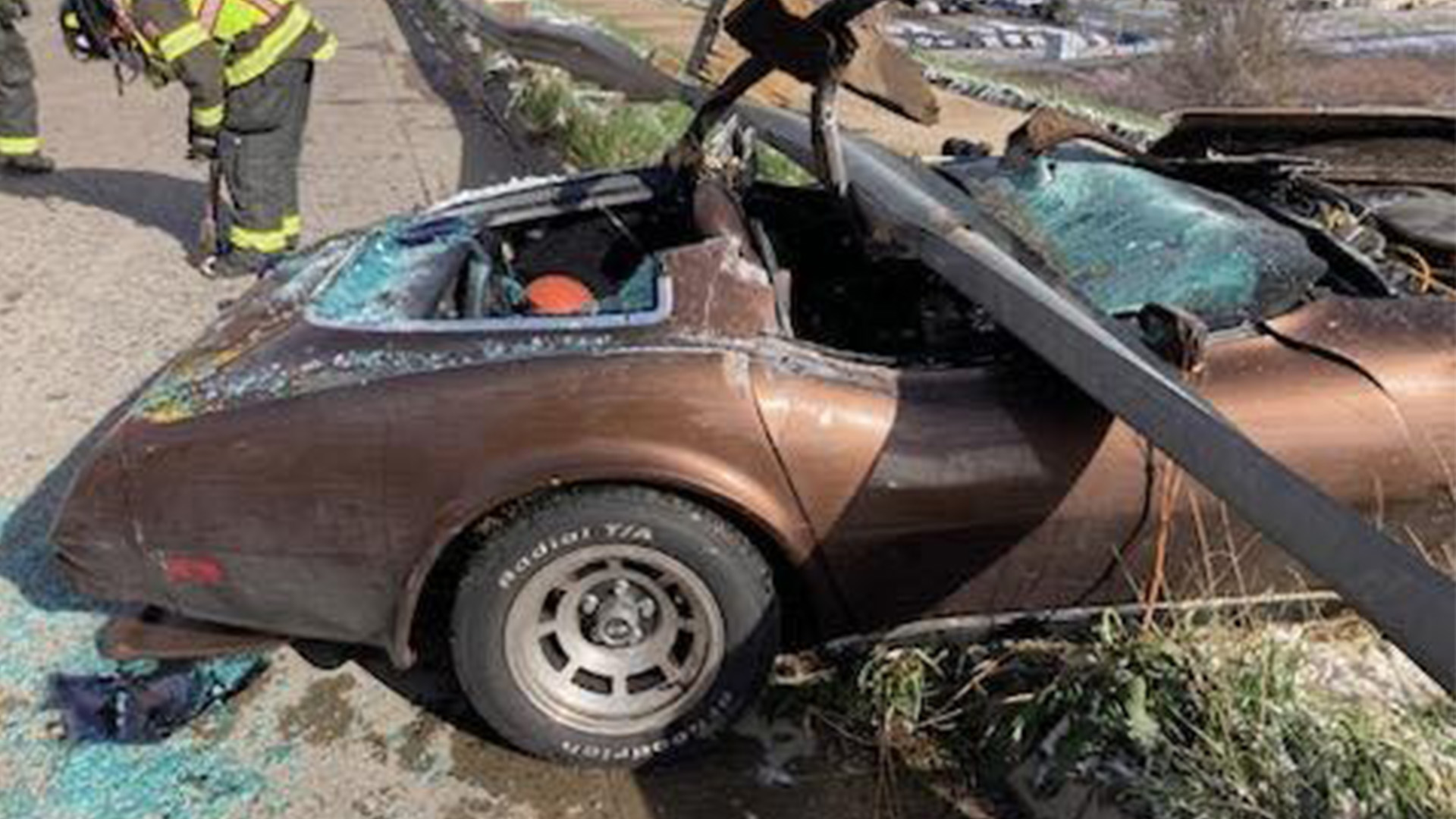Pete Hegseth Is Gutting Pentagon Programs to Reduce Civilian Casualties
The defense secretary’s focus on “lethality” could lead to “wanton killing and wholesale destruction and disregard for law,” one Pentagon official said. The post Pete Hegseth Is Gutting Pentagon Programs to Reduce Civilian Casualties appeared first on The Intercept.

The Pentagon had been slowly dedicating more resources to killing fewer civilians in recent years, following a long drumbeat of damning investigations of civilian casualties by the press, nongovernmental organizations, government-supported think tanks, and even the U.S. military itself.
But now, under the control of Secretary of Defense Pete Hegseth, the Department of Defense is reversing course.
The Intercept spoke with five current and former Defense Department officials familiar with its Civilian Harm Mitigation and Response, or CHMR, efforts, who say that the Pentagon is in the process of eliminating or downsizing offices, programs, and positions focused on preventing civilian casualties during U.S. combat operations.
On the chopping block are the Civilian Harm Mitigation and Response office, which handles policies that reduce dangers to noncombatants, and the Civilian Protection Center of Excellence, which is focused on training and tools for preventing civilian casualties.
The Army also recently announced it will make law of war training — which covers basic battlefield ethics, prohibited acts, and rules of engagement — optional, in an effort to remove “unnecessary distractions” and increase focus on “decisive action in combat.”
This comes as Hegseth trumpets an overwhelming emphasis on “lethality” and cuts to programs that run afoul of Trump administration priorities. Hegseth also reportedly plans to overhaul the entire JAG Corps, which is essential to ensuring adherence to the rule of law and upholding the Uniform Code of Military Justice, after firing the judge advocates general of the Army, Navy, and Air Force.
Trump has also rolled back constraints on American commanders to authorize airstrikes and Special Operations raids outside conventional battlefields, broadening the range of people who can be targeted. After Trump relaxed targeting principles during his first term, attacks and reports of civilian casualties in war zones like Somalia and Yemen spiked.
“There is an overt and ongoing effort to completely shut the Center down and to remove CHMR across all the commands,” said Wes Bryant, who until recently served as the chief of civilian harm assessments and senior analyst and adviser on precision warfare, targeting, and civilian harm mitigation at the Pentagon’s Civilian Protection Center of Excellence. “Basically, they are wiping DoD of anything related to Civilian Harm Mitigation and Response.”
The four other officials, who spoke on the condition of anonymity for fear of retribution or to preserve their ability to lobby behind the scenes, expressed varying levels of concern over how the demise of CHMR would affect combat operations and what Hegseth’s priorities might mean for the world. One of them mused that “lethality” might prove to be only meaningless jargon, but worried that it could indicate something far worse: eschewing military professionalism in favor of “wanton killing and wholesale destruction and disregard for law.”
CHMR-oriented personnel at combatant commands around the world will be shuffled into new roles, according to some of the officials. Central Command, or CENTCOM, which oversees military operations across the Middle East, pushed back on this when contacted by The Intercept, stating that the “CHMR team at CENTCOM will continue to provide civilian harm mitigation and assessment support to the command for the foreseeable future.”
Several officials were hopeful that a concerted effort by advocates to preserve some CHMR work at the Pentagon and at combatant commands would allow harm mitigation efforts to endure within different structures and under different names. But even one of those former officials said that the CHMR enterprise was likely to end up “stillborn,” unable to even complete the phased implementation first laid out in the Civilian Harm Mitigation and Response Action Plan — written at the direction of then-Secretary of Defense Lloyd Austin — that was released in 2022.
One official emphasized that CHMR’s core principles provide more benefits to the military than an overriding focus on lethality. “Shrinking or perverting it beyond recognition or getting rid of it altogether does a disservice to the men and women of the DoD and the institution itself, not to mention the American public,” that official said.
The Pentagon refuses to say whether Hegseth will rescind the CHMR instruction, which established the Pentagon’s policies, responsibilities, and procedures for mitigating and responding to noncombatant casualties. “We have no new announcements to make regarding office closures or changes to policy at this time,” an unnamed Pentagon spokesperson replied, by email, to repeated detailed questions.
“Dismantling these efforts would undermine years of work to learn from past mistakes and improve how the U.S. prevents and responds to civilian harm from its operations — work that actually began under the first Trump administration,” said Annie Shiel, the U.S. advocacy director at the Center for Civilians in Conflict. “Congress mandated many of these efforts through bipartisan legislation, and it must ensure that the programs it authorized and funded are not abandoned.”
Hegseth has made it clear that enhancing his department’s capacity to kill people is his number one priority. “Your job [as secretary] is to make sure that it’s lethality, lethality, lethality. Everything else is gone. Everything else that distracts from that shouldn’t be happening,” he said during his confirmation process. Since taking the helm at the Pentagon, Hegseth has doubled down. “We will revive the warrior ethos,” he announced. “We will remain the strongest and most lethal force in the world.”
As a Fox News personality, Hegseth — a former Army National Guard officer who served in Afghanistan and Iraq — cast troops charged with war crimes as “heroes.” During Trump’s first term in office, Hegseth lobbied for pardons of Army Lt. Clint Lorance and Army Maj. Mathew Golsteyn, and championed Navy SEAL Edward Gallagher, each of whom was charged or convicted of war crimes committed in Iraq and Afghanistan. Trump granted pardons to Lorance and Golsteyn, and reversed a demotion of Gallagher, tagging Hegseth in a tweet announcing the review of one of the cases.
Hegseth takes a dim view of the Geneva Conventions, which form the foundation of the law of armed conflict, or LOAC, and remain the most important rules limiting the barbarity of war by protecting civilians, wounded combatants, and prisoners of war, among others. In his 2024 book, “The War on Warriors,” Hegseth asked, “Should we follow the Geneva conventions? … Aren’t we just better off in winning our wars according to our own rules?”
At his Senate confirmation hearing, Hegseth said that during his time in the military, “restrictive rules of engagement” briefed to him by a military lawyer, known as a JAG, made war-fighting more difficult. But rules of engagement, which provide instructions for the use of deadly force in military operations, are issued by a senior commander — not a JAG officer.
Bryant — who worked as a Special Operations joint terminal attack controller, or JTAC, and called in thousands of strikes against the Islamic State and other terrorist groups across the greater Middle East before serving as chief of civilian harm assessment — said that Hegseth has little grasp of the laws of war.
“In Hegseth, you have a Secretary of Defense who really does not understand LOAC. Every time I’ve heard him talking about his time in Afghanistan and the law of armed conflict, he’s talking about things that were not actually LOAC but policy,” said Bryant. “So, Hegseth blames all his experiences of being overly restricted in combat on military lawyers and LOAC — when the types of operational restrictions he has cited have nothing to do with lawyers, the law of armed conflict, or international law.”
the Signal Chat among senior Trump administration officials (and a journalist) discussing military strikes in Yemen revealed that the attack targeted a civilian residence in an effort to kill a Houthi target. It is one of more than 200 strikes conducted in Yemen by the Trump administration since the beginning of March, carried out in an attempt to force Houthi fighters to halt attacks on ships in the Red Sea, which the Houthis say is in response to Israel’s war in Gaza. Local Yemeni authorities say more than 50 civilians have been killed in the attacks.
(Hegseth is currently under investigation for his use of Signal, the end-to-end encrypted messaging app. That inquiry is being conducted by Acting Inspector General Steven Stebbins because Trump fired Robert Storch from his Senate-confirmed Pentagon inspector general role as part of his firings of 17 inspectors general across the government in January.)
Fifteen civilians were reportedly killed and at least 20 injured in strikes on March 15 and 16, alone, according to Airwars, the U.K.-based airstrike monitoring group. “In just two days of strikes under the new Trump administration, U.S. forces reportedly killed half the number of civilians killed in a full year of strikes under Biden,” the group reported.
These strikes were conducted with CENTCOM’s civilian harm mitigation and response officers still on the job. “The CHMR team at U.S. CENTCOM continues to be focused on their assigned tasks. There has been no change to their status or work focus,” a nameless “defense official” told The Intercept by email. “We do not anticipate the DoD CHMR effort at CENTCOM being shutdown at this point.”
Trump also recently posted a black-and-white video showing more than 70 people gathered in a circle. An explosion occurs during the 25-second video, leaving a massive crater. “These Houthis gathered for instructions on an attack,” Trump claimed, without offering a location or any other details about the strike. “Oops, there will be no attack by these Houthis!”
A former U.S. drone pilot and strike cell analyst, who served in the CENTCOM and Africa Command regions during the first Trump administration was skeptical of the vetting process that identified the targets in Trump’s video. “My suspicion is that it is very low. NAI — names, area of interest — and gatherings would be all that is required. This is not proper vetting, if this is what they are doing,” he told The Intercept on the condition of anonymity due to his nondisclosure agreements with the government. “Remember in his first term the whole of AFRICOM was shut down due to negligent strikes. They had multiple ‘missed’ strikes that killed civilians.”
After Trump relaxed targeting principles during his first term, attacks in Somalia tripled and U.S. military and independent counts of civilian casualties across U.S. war zones — including Afghanistan, Iraq, Syria, and Yemen — increased. Since taking office a second time, Trump again rolled back constraints on American commanders to authorize airstrikes and Special Operations raids outside conventional war zones.
During his first overseas trip as defense secretary, Hegseth met with senior AFRICOM leaders and signed a directive easing policy constraints and executive oversight on airstrikes. “The president and the secretary of defense have given me expanded authorities,” Gen. Michael Langley, the chief of AFRICOM recently told the Senate Armed Services Committee. “We’re hitting them hard. I now have the capability to hit them harder.”
A 2023 investigation by The Intercept found that one April 2018 attack on al-Shabaab militants in Somalia — conducted under Trump’s loosened rules — killed three, and possibly five, civilians, including 22-year-old Luul Dahir Mohamed and her 4-year-old daughter, Mariam Shilow Muse. At the time, AFRICOM announced it had killed “five terrorists” and that “no civilians were killed in this airstrike.”
The Pentagon’s inquiry into the attack that killed Luul and Mariam found that the Americans who conducted the strike were confused and inexperienced and that they argued about basic details, like how many passengers were in the targeted vehicle. The U.S. strike cell members mistook a woman and a child for an adult male, killing Luul and Mariam in a follow-up attack as they ran from the truck in which they had hitched a ride to visit relatives. Despite this, the investigation — by the unit that conducted the strike — concluded that standard operating procedures and the rules of engagement were followed. No one was ever held accountable for the deaths. For more than six years, Luul and Mariam’s family has tried to contact the U.S. government, including through an online civilian casualty reporting portal run by AFRICOM, but did not receive a response.
When asked how the demise of CHMR would affect AFRICOM operations, spokesperson Kelly Cahalan punted. “CHMR is an OSD policy,” she told The Intercept, referring to the Office of the Secretary of Defense. “We aren’t going to speculate about potential policy changes.”
Multiple sources, speaking on background, said that CENTCOM chief Gen. Michael “Erik” Kurilla had specifically advocated for civilian harm mitigation efforts, which the Washington Post previously reported, purportedly telling others that his CHMR officers were an integral part of the command’s operations. CENTCOM refused to offer comment. “We have nothing to provide you on this,” a “defense official” wrote in an email.
Some experts worry that the pending demise of CHMR, the firings of the judge advocates general, and loosened rules of engagement for drone strikes and commando raids is part of a broader push to shunt aside ethics and accountability across the military.
“The U.S. is setting up its own warfighters to fail.”
“We’re seeing a dramatic reversal of progress across the armed forces, which will ultimately undermine the United States’ strategic goals. Military success isn’t measured by the number of people the armed forces kill; it’s measured by winning carefully-planned battles designed to achieve a strategic military goal without causing needless destruction,” Daphne Eviatar, the director of the Security With Human Rights program at Amnesty International USA, told The Intercept. “By emphasizing lethality and eliminating training on the laws of war, loosening rules of engagement and firing anyone with power to exercise oversight over U.S. armed forces, the U.S. is setting up its own warfighters to fail.”
Bryant voiced similar concerns about where the potential demise of CHMR efforts would ultimately lead. “I do worry about the direction that Hegseth and the Trump administration are going after this first step of dissolving the CHMR enterprise. Is this administration now going to try to change the warfighting culture and doctrinal standards of the U.S. military, and have us executing our next conflict more like Israel has carried out in Gaza?” he asked. “If we do get into a large-scale conflict — whether in Europe or China or elsewhere — will we not care one way or another about the civilian populace? Will our current low tolerance for civilian casualties and historically conservative application of ‘proportionality’ under international law be completely reversed?”
The post Pete Hegseth Is Gutting Pentagon Programs to Reduce Civilian Casualties appeared first on The Intercept.










![From fast food worker to cybersecurity engineer with Tae'lur Alexis [Podcast #169]](https://cdn.hashnode.com/res/hashnode/image/upload/v1745242807605/8a6cf71c-144f-4c91-9532-62d7c92c0f65.png?#)

































































